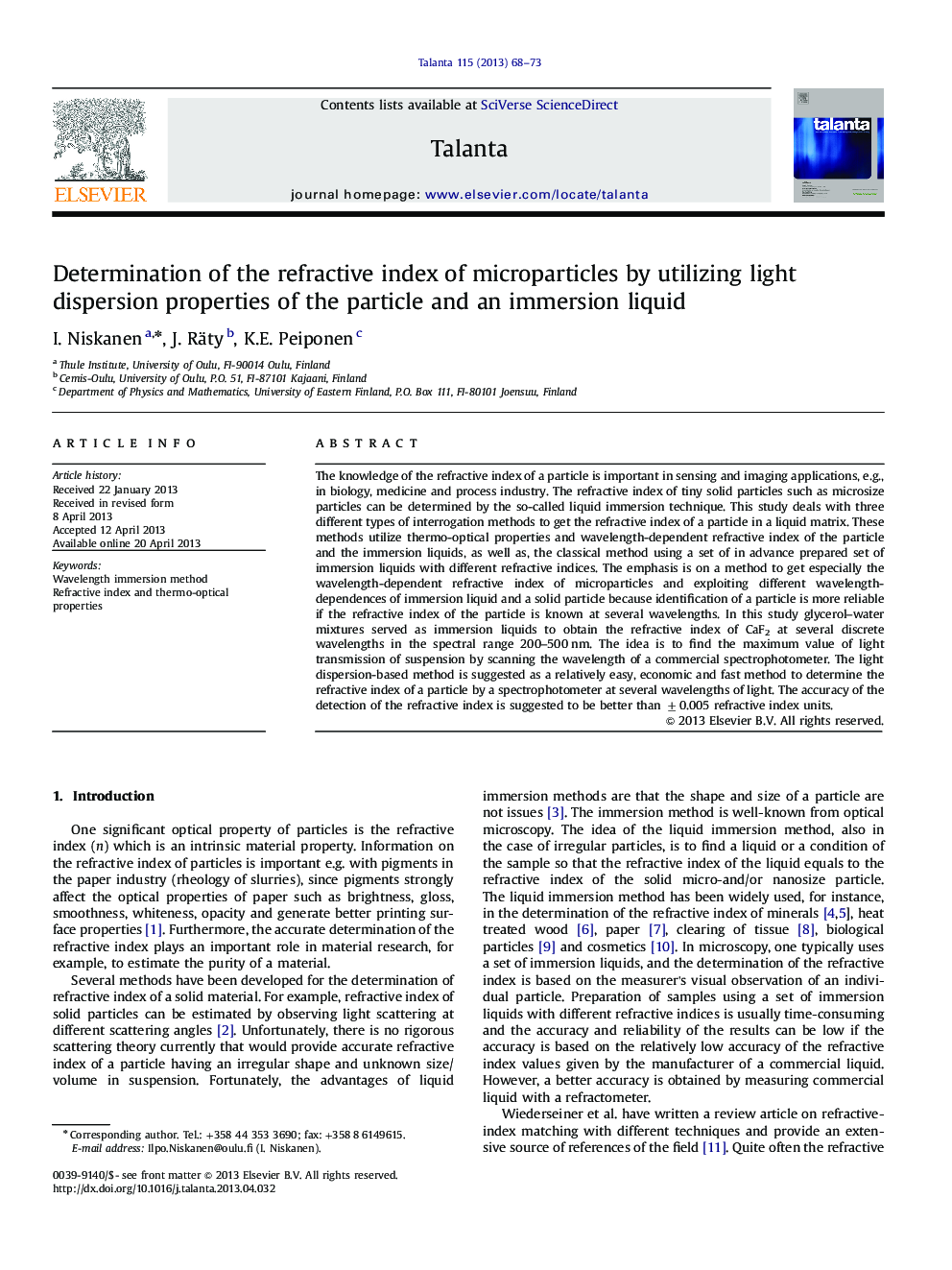| کد مقاله | کد نشریه | سال انتشار | مقاله انگلیسی | نسخه تمام متن |
|---|---|---|---|---|
| 7681562 | 1495820 | 2013 | 6 صفحه PDF | دانلود رایگان |
عنوان انگلیسی مقاله ISI
Determination of the refractive index of microparticles by utilizing light dispersion properties of the particle and an immersion liquid
ترجمه فارسی عنوان
تعیین شاخص ریزش کردن میکروارگانیسم ها با استفاده از خواص پراکندگی نور ذرات و مایع غوطه وری
دانلود مقاله + سفارش ترجمه
دانلود مقاله ISI انگلیسی
رایگان برای ایرانیان
کلمات کلیدی
روش غوطه وری طول موج، شاخص شکست و خواص حرارتی اپتیکی،
موضوعات مرتبط
مهندسی و علوم پایه
شیمی
شیمی آنالیزی یا شیمی تجزیه
چکیده انگلیسی
The knowledge of the refractive index of a particle is important in sensing and imaging applications, e.g., in biology, medicine and process industry. The refractive index of tiny solid particles such as microsize particles can be determined by the so-called liquid immersion technique. This study deals with three different types of interrogation methods to get the refractive index of a particle in a liquid matrix. These methods utilize thermo-optical properties and wavelength-dependent refractive index of the particle and the immersion liquids, as well as, the classical method using a set of in advance prepared set of immersion liquids with different refractive indices. The emphasis is on a method to get especially the wavelength-dependent refractive index of microparticles and exploiting different wavelength-dependences of immersion liquid and a solid particle because identification of a particle is more reliable if the refractive index of the particle is known at several wavelengths. In this study glycerol-water mixtures served as immersion liquids to obtain the refractive index of CaF2 at several discrete wavelengths in the spectral range 200-500 nm. The idea is to find the maximum value of light transmission of suspension by scanning the wavelength of a commercial spectrophotometer. The light dispersion-based method is suggested as a relatively easy, economic and fast method to determine the refractive index of a particle by a spectrophotometer at several wavelengths of light. The accuracy of the detection of the refractive index is suggested to be better than ±0.005 refractive index units.
ناشر
Database: Elsevier - ScienceDirect (ساینس دایرکت)
Journal: Talanta - Volume 115, 15 October 2013, Pages 68-73
Journal: Talanta - Volume 115, 15 October 2013, Pages 68-73
نویسندگان
I. Niskanen, J. Räty, K.E. Peiponen,
